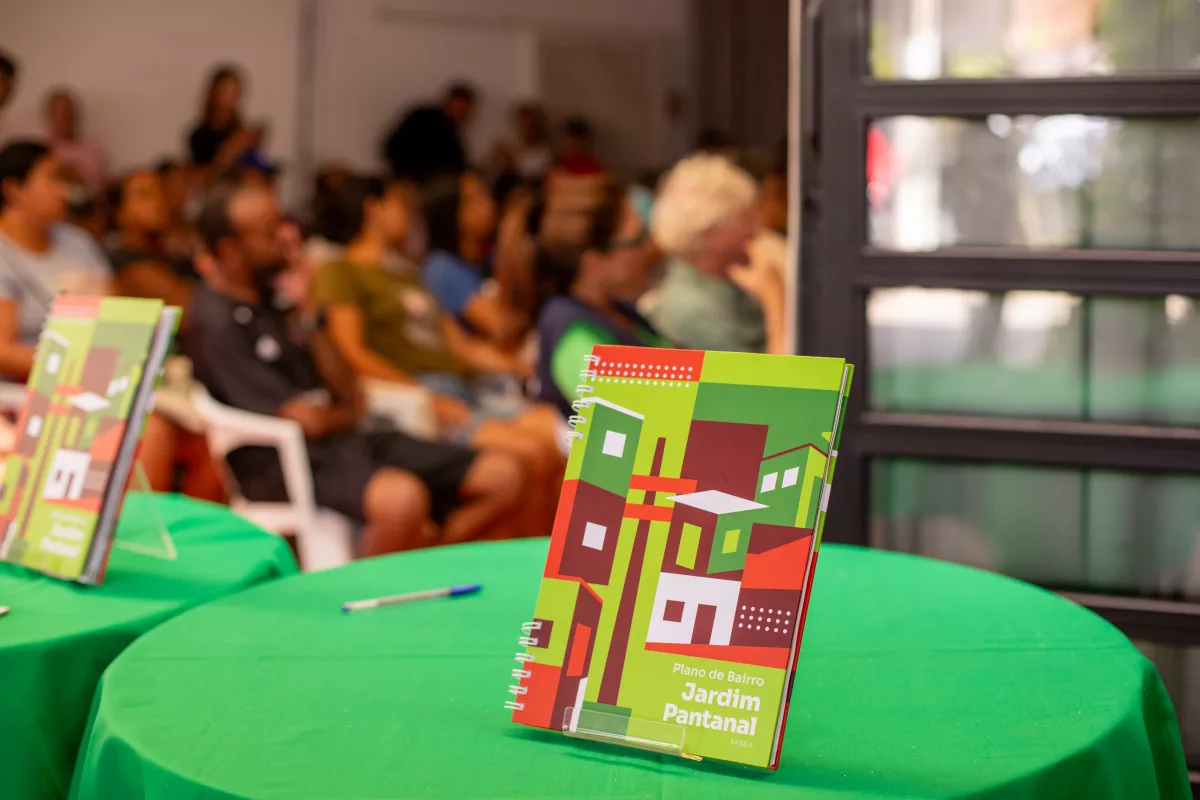06/03/2024
Jardim Pantanal is a neighborhood on the far east side of São Paulo which, located on the banks of the Tietê River, has a history of transformations, challenges, and strong community leadership in a highly vulnerable region. Bringing together a series of actions in urban planning, citizenship, and social development tailored to the neighborhood, the Alana Institute, the Institute of Architects of Brazil – São Paulo Department (IABsp), and local residents launched the second phase of the Jardim Pantanal Neighborhood Plan this Saturday (2), at an event held at Espaço Alana. The venue promotes improvements in the quality of life of families in the neighborhood, fostering leisure, culture, free play, and the strengthening of local networks.
This stage of the plan, developed for the neighborhood, was established by the Municipal Master Plan in 2014, with its first phase launched in 2022. However, the vision is the result of decades of effort: more than 30 years of struggle by residents demanding structural and targeted improvements in the region. The Neighborhood Plan was and continues to be actively built by the hands of local residents, serving also as a call to the community for action.
What is a Neighborhood Plan?
The Neighborhood Plan is an urban planning tool that encourages community participation in building actions and proposals for local improvement. It organizes and articulates various needs and proposals to present them to public authorities, aiming to positively transform the territory.
Initial Impact
For Joyce Reis, Master in Urban and Regional Planning, the Neighborhood Plan should not be understood as a process that ends with the publication of the material, but rather as a living movement, envisioned by neighbors, families, and the entire Jardim Pantanal community. For Fábio Moraes, a specialist in social urbanism, the plan is “a milestone that gives full autonomy to the community,” by offering data, resources, and technical grounding for residents to continuously demand improvements in the region.
Sonia Maria Ferreira, a resident since 1984 and member of the Association of Residents and Friends of Jardim Pantanal (Amojap), shared that more than just a neighborhood, “Jardim Pantanal was a people living on the banks of the Tietê River with the goal of improving life.” She emphasized that the plan was not created only by engineers or architects, but also by children, which symbolizes a future to be realized for them.
“This neighborhood plan does not mean only urbanization or having a place to store bicycles. It means having a place where we can live and grow.”
Nature-Based Solutions
Leila Vendrametto, coordinator of the Urbanizar program and PhD candidate in Environmental Science at the Institute of Energy and Environment at the University of São Paulo (USP), explained that some of the solutions proposed in the Neighborhood Plan include the creation of rain gardens; the development of green corridors to improve local climate conditions, such as temperature and air quality; and the creation of TiNis gardens (a tool based on planting seeds that can begin with just three pots or half a square meter of soil), where children help co-create and design spaces present in their daily lives.
What is a rain garden?
According to Verde SP, a rain garden is a permeable space that functions as a large sponge, helping cities better manage rainwater. They are built at a lower level than the street, so runoff water can infiltrate and occupy the space. Vendrametto stressed that while rain gardens help absorb water, they alone do not solve the community’s problems, “because the geographical conditions of the area, its soil, and the river require more robust and complex solutions.”
For her, nature-based solutions can be not only ecological but also aesthetic, as gardens, for example, “improve air quality, climate, and reinforce the beauty of the place,” while bringing children into the center of the socio-environmental perspective.
“Can we build a garden at the school entrance? A shaded space where children can stay? Bringing in more pollinators and creating more flower gardens to enjoy these spaces with living beings beyond humans further enriches the territory’s ecosystem. This way, children understand insects, pollinators, and a sense of well-being that might be invisible but is present.”
How Does the Neighborhood Plan Make a Difference for the Community?
“Eight years ago, we had a different outlook on life than we do today. Back then, even setting an appointment with public authorities was difficult. Today, we have greater access due to community mobilization, and the neighborhood plan allows everyone to participate and contribute,” said Reginaldo Pereira Santos, a resident of Jardim Pantanal for 19 years and president of Amojap.
He explained that for a long time, residents lost faith in change, as the area they live in is an environmental protection zone with many restrictions. “We who need housing don’t care if our house is on the riverbank, up high, or down low. For this to work, we needed mobilization.”
“Today, things have advanced a lot, like basic sanitation. A year and a half ago we were drinking dirty, muddy water, and now we have potable water.”
Sonia Ferreira added: “Politics starts with us, not with deputies or councilors.” She said the neighborhood plan “is not decoration,” but a tool to meet the population’s needs and dreams. While it stimulates political participation, “the government only acts if society demands it. It is our right, but we must move slowly and together.”
Among the results of the Neighborhood Plan, she highlighted the bike path and tours such as the Ciclotour between Jardim Helena and Itaim Paulista. “People come together to cycle within the neighborhood, showing that it is good and large.”
She also emphasized that political participation is not only about asking the government to fix a pothole or pave a street. Everything that is done must be thought of collectively. “Politics helps us think on a broader scale, and with that wider perspective, we achieve things we never even imagined,” she concluded.




